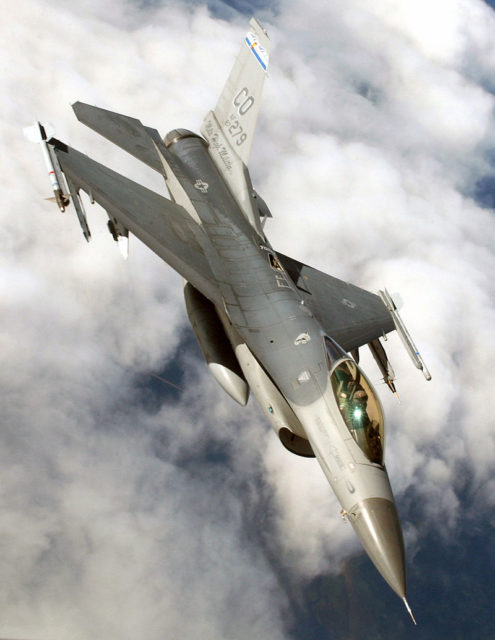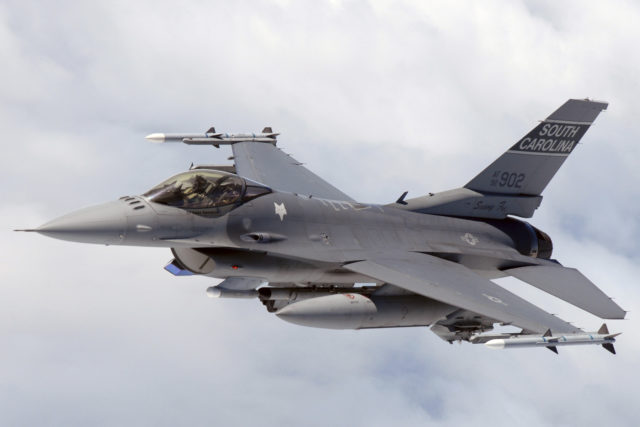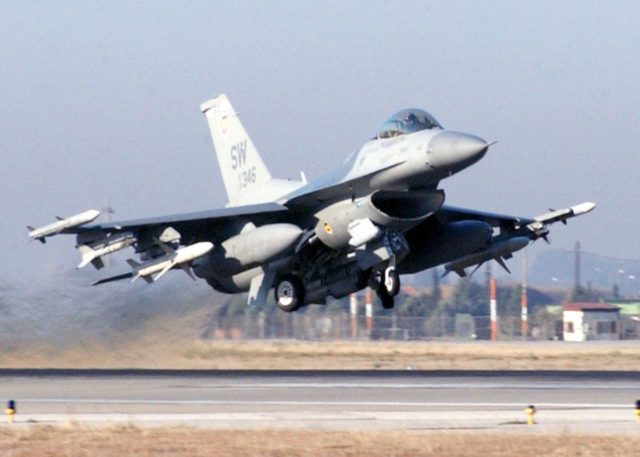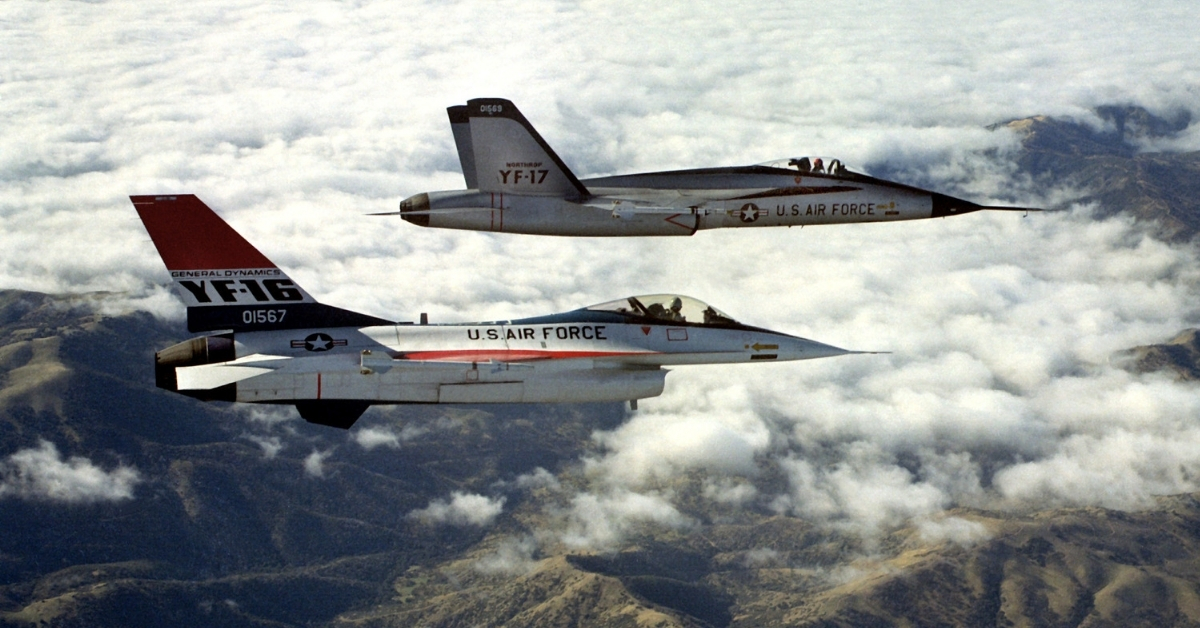For many modern Americans, General Dynamic’s F-16 Fighting Falcon is the most iconic fighter jet of the United States military. The plane has been in use since the beginning of production in 1976, and is known for its frameless bubble canopy and specific wing layout. The military produced 4,500 F-16s since then, and while they are no longer made for use in the United States, several modified profiles are still sold to export countries.
Where has the F-16 been used
The F-16 is currently in use by several branches of the military and has an extensive history as a military plane. These jets flew in Pakistan in the late 1980s, Turkey purchased several in 1987, and Iraqi forces completed F-16 bombing runs in Libya as recently as 2015.
The Air Force used F-16s during Operation Desert Storm in 1991, and in the Balkans, later in the 1990s. F-16s patrolled the no-fly zones in Iraq during operations there, and also served during the wars in Afghanistan and Iraq in 2001-2003.
Originally, the Lockheed Martin F-35 planned to replace the F-16, but delays in the production of the F-35s have meant that the F-16s will need service life extension upgrades.

Iraqi Pilots, American Training
Popular Mechanics interviewed one of the training pilots in 2015. To protect his identity when he returned to his home, as well as his family’s safety, he was only identified as Nawaf in the interview. Nawaf’s father had been conscripted into Saddam Hussein’s army, and Nawaf grew up worrying about a chemical attack that he and his family would need to flee. He told the magazine that their car was kept continually packed with everything they would need: clothes, food, water, gas masks. His father had wanted to be a pilot, but as a Kurd, was forbidden. “I’m doing this for my dad,” Nawaf told the magazine. They regularly spoke during his training, with his father asking about what maneuvers he had learned, and what flying was like.
Asked about the missions he would be running when he returned home, Nawaf said “We have to be so precise in order to not have collateral damage, not hit civilians. When we get back home, it’s our own cities we will bomb.”

F-16s on September 11
One of the lesser known stories from September 11, 2001, is that of Heather Penney. One of the first combat jet fighter pilots in the American military, Lt. Penney took to the air on that September morning as Flight 93 flew towards Washington. Her mission: to take the plane down by any method necessary. Her plane, however, was still equipped with dummy bullets from a recent training mission. As she and her commanding officer took their jets up off the air strip, she knew that they would be ramming their planes into a Boeing 757.
It took a decade for Lt. Penney to speak about what she went through that morning. When she decided to speak to the Washington Post, she served as the director of the F-35 program. She has described that mission as a suicide mission, saying “We had to protect the airspace in any way we could.”
Now a major, Penney was a rookie that September morning. Her father served as a fighter pilot in Vietnam, and she signed up to follow him. In the briefing room, she heard that it would take an hour for a live plane to be in the air, but someone needed to stop the plane heading to Washington immediately. She and her commanding officer knew what had to be done: if their only weapon was their planes, then they would ram Flight 93. She would take the tail while her CO headed for the cockpit. As she heading into the air, she muttered what she called a pilot’s prayer – God, don’t let me [expletive] up – and flew.
Asked about potentially ejecting just before hitting the target, Penney trailed off; what if she ejected, and the plane missed its target? Clearly, failing her mission troubled her more than the thought of dying.
Of course, Flight 93 was brought down by passengers, and Penney and her CO did not need to make the ultimate sacrifice for their country. They spent the rest of the day in the air, clearing the airspace, and eventually escorting Air Force One back to the White House.

Legacy of the F-16
Both the F-22 and the F-35 have been scheduled to replace the F-16, but both planes have struggled with mechanical problems that keep them from being cost-effective replacements. At the same time, the stealth and maneuverability upgrades that were anticipated at the beginning of the F-22 cycle have not surfaced in other countries. We may end up seeing F-16s in the air for many more years. If you want to see what an F-16 can do under the control of an experienced pilot, check out one of the many Air Force Thunderbirds shows around the country each year.
As for the situation which sent Lt. Penney into the air with nothing but her plane itself to protect her country, two jets are now kept “hot-cocked” at all times, with pilots located right near them, ready to go.
